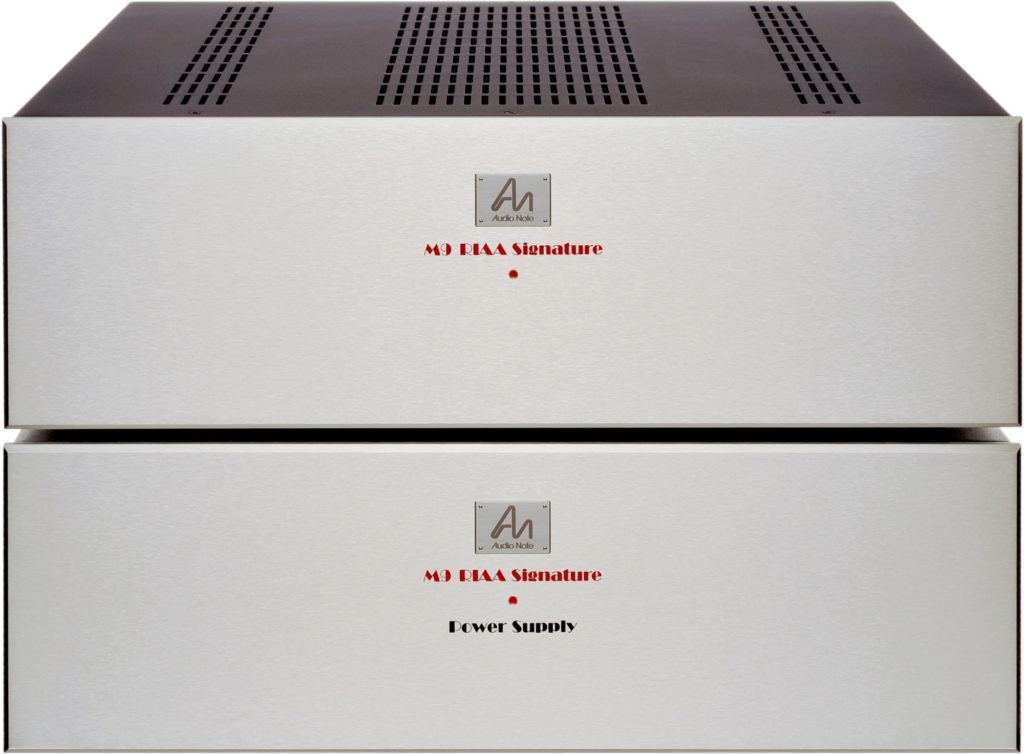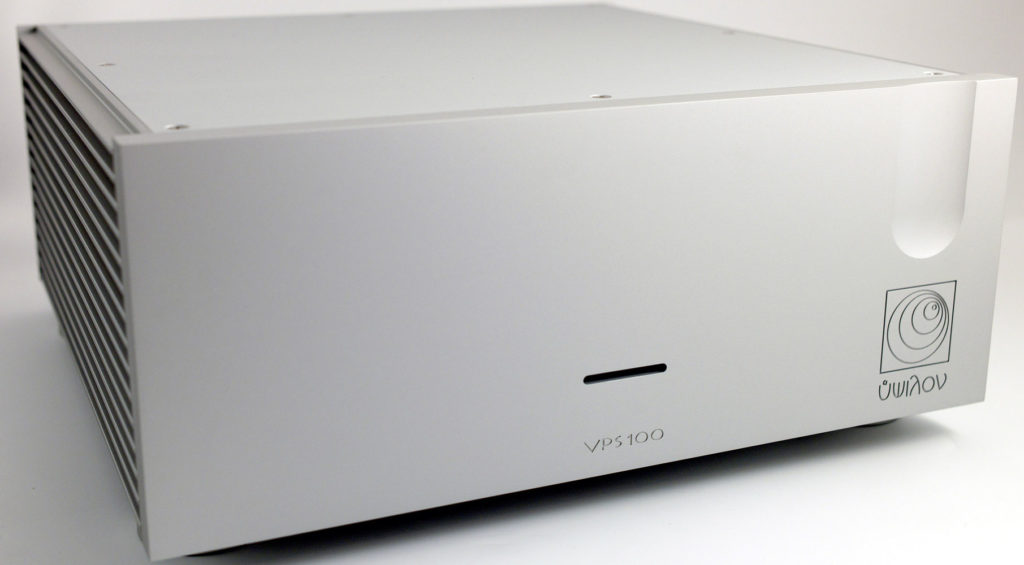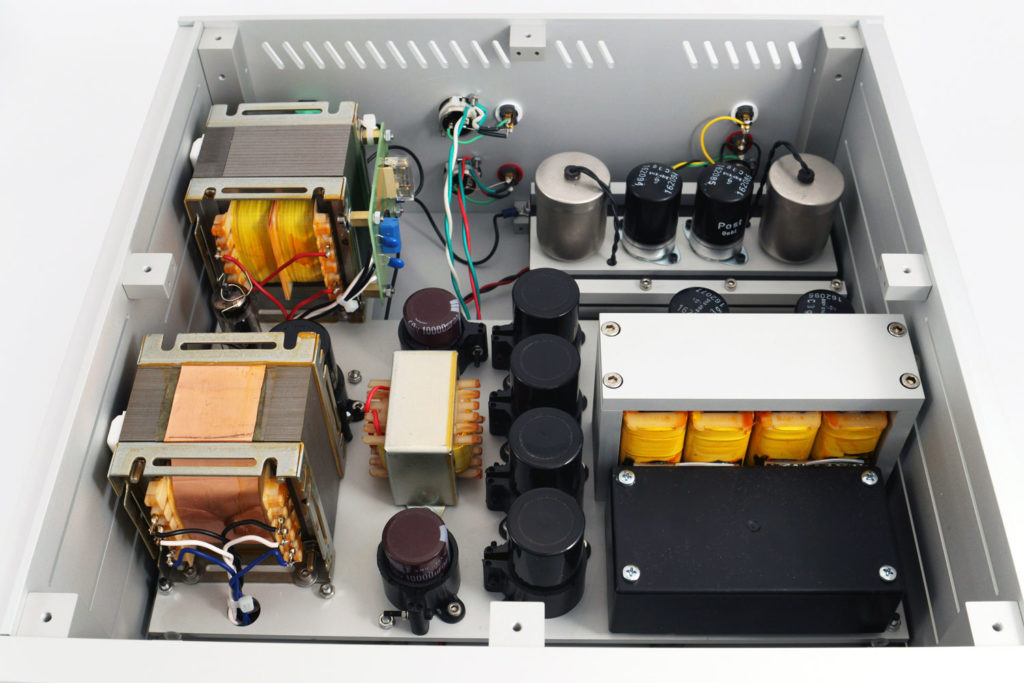Read Audio Note M9 RIAA Signature phono stage Review, Part 1
This is the second of a two-part review on the Audio Note M9 RIAA Signature phono stage. The first article described the sound of the M9 and this one will focus on 1) a comparison of the Audio Note M9 RIAA Signature with the Ypsilon VPS-100, 2) a comparison of the Audio Note S9M step-up transformer and the Ypsilon VPS-100, concluding with 3) listening impressions of the Audio Note M9/S9M used in conjunction with the Audio Note M10 Signature line stage.
The Ypsilon VPS-100 ($26,000)/Ypsilon 16L Step-up Transformer ($6,200)
As in Part 1, listening impressions are indexed chronologically by recording:
Johnny Hodges – Compared to the Audio M9 in general, the recording with the Ypsilon VPS-100 was lacking the fullness of the brass and winds through the Acapella Triolon Excalibur speakers, and missing some of the ambience, particularly in the center of the stage. The basses seemed about right and cymbals did have a bit more bite than with the M9. Piano had somewhat more tinkle. On tunes that were less loud, edge with the Ypsilon was somewhat less apparent.
This recording did seem spectacular on the M9; on the Ypsilon, it was very good but missing the “wow” factor. This related to the lack of fullness of the stage, hence the tendency of instruments to sound thinner. It was almost as if we were missing a bit of information with the Ypsilon in the midrange; however, this is not to say that it did not retrieve a significant amount of what was in the grooves, especially in the topmost octaves.
Brahms, Symphony 2, Karajan – Here, the sound of the recording was significantly better than with the Johnny Hodges. There was good, solid bass with clarity between the lines. Conversely, the sound remained somewhat brighter than the M9 and thus a bit bleached in comparison. The midrange continued in comparison to lack some warmth and heft of the M9, but this was more a matter of degree than a total absence. The orchestra in general seemed slightly more forward. Perhaps this is a bit peculiar, but while with the M9 there was more midrange depth and warmth, the Ypsilon might have displayed more clarity in the same frequencies. Given my preferences, I certainly enjoyed the M9 more.
Debussy, Images, Rosenthal, (Westminster) – It was somewhat of a mystery why this record sounded so good, but it did on both the Ypsilon and the Audio Note. On both, the soundstage was huge and the instruments were vividly forward, and still seeming to be in the space of a hall. I would rank the experience superior on the Audio Note; however, there was no mistaking the audiophile characteristics as displayed on the Ypsilon. The only thing missing in the Ypsilon comparison to the M9 was some of the warmth and depth of the midrange and the slightly smoother highs of the Audio Note.
Respighi, Brazilian Impressions, Paray, (Mercury) – This was a simply amazing sounding recording with some tape hiss. Had I never heard this on the M9, I would have been much happier with it on the Ypsilon. The soundstage was huge, the notes were all there, as was the ambience; the detail was rather forward, but amazingly present. But the tape hiss. I rather liked the antiquity of the sound of the tape hiss with the M9. With the Ypsilon, the tape hiss was lodged in my eardrums like a rattling ventilator in an old concert hall in the winter or the low-pitched rumble of a subterranean train running underneath the concert hall. And then there was the sound of the strings – it seemed like it’s more shimmer than wood on the Ypsilon. When they got loud, they didn’t sound so much like violins as a recording of the instruments, which was pretty damn good. On the M9, there was more of the illusion of experiencing the music as it happened.
Talking Heads – Again, with the Ypsilon, everything was there but a bit lean. The guitars were almost painfully scratchy at times. Nevertheless, the excitement of the best tunes came through well and was beguiling.
Faure, Piano Quartet, played by the Festival Quartet (RCA) – The Ypsilon emphasized the strangeness of the recording. The strings were very forward with almost no air, no room to breathe. On Side 1, this could be almost painful at times; yet, on Side 2, it worked and the third movement was absolutely breathtaking. Then came the realization that side 1 of this pressing was cut hotter and therefore suffered as a result.
Koechlin, Jungle Book, Side 4 – At a point early on, the strings got quite active, from the cellos up. There was quite a bit of bow scratching noise. The Ypsilon seemed almost to focus more on attacks than on the wood behind the attacks. It was aggressive and not entirely pleasant; however, much of both sides 3 and 4 were lovely.
In summary: the Ypsilon VPS-100 was, all things considered, a phenomenal piece of equipment, but it was pretty damn revealing of certain things, often at the expense of some musicality for which the Audio Note M9 RIAA Sig. seemed better voiced to reveal. Consequently, 50% of records seemed musically satisfying on the Ypsilon VPS100 while more like 80% seemed musically satisfying on the Audio Note phono stage and this was not because the AN was euphonic or in any way sacrificed accuracy. The AN hid absolutely nothing; however, it did bring more of the midrange detail to the table as well as an evenness across the frequency range, which in my experience always brings the listener closer to the magic of the original performance.
To be fundamentally fair, I should mention that my Ypsilon YPS-100 was the version utilizing copper wire throughout and not the more expensive version, which employed the same circuit and parts but used silver wire and silver wound transformers throughout.
- (Page 1 of 3)
- Next page →




I appreciated your review of The ANs9 transformer, I also purchased my s9 without the pallas cable, and using various cables to connect s9 to phono stage noticed similar improvements.
Gary,
As you can probably discern from the review, I spend an inordinately long time listening to the equipment being reviewed prior to ever putting pen to paper. Nonetheless, I always appreciate independent confirmation of my conclusions from readers, so many thanks for your comments. What cabling do you prefer? I have tried many and have yet to find anything which I prefer to the Nordost Odin 2.
Fred Crowder
Hello Fred
Thanks you so much for for the great reviews and i have learned and enjoyed reading your reviews very much. I have a audio note m10 signature preamp and currently using odin1 power cord. Am looking into upgrade my cable and want to know if I should get odin2 or audio note sootto power for my 10m signature?
Thanks
Sky
Hello Sky,
I am not sure that the Odin would be the best match for the M10 , but if you like the Odin 1 then the 2 is a safe choice as it clearly betters the 1. I auditioned the Sooto with the M10 and for my tastes preferred the Stage 3 Kraken; however, this is system dependent. In your shoes, I would probably go with the Odin 2.